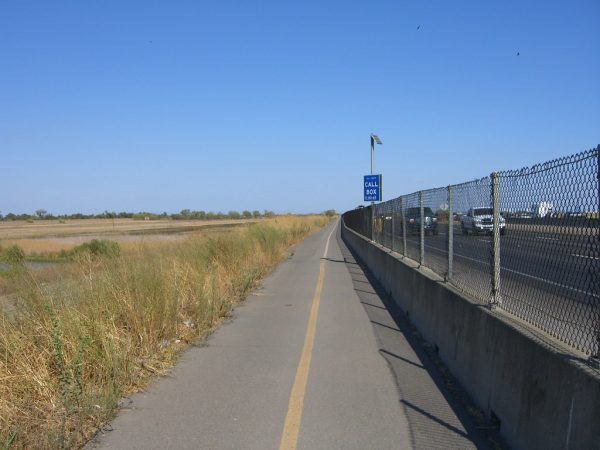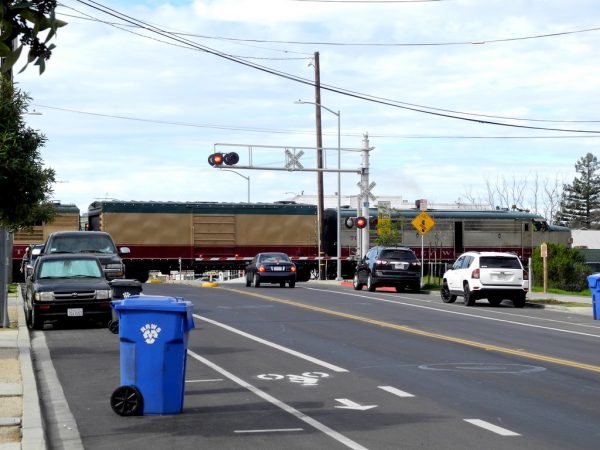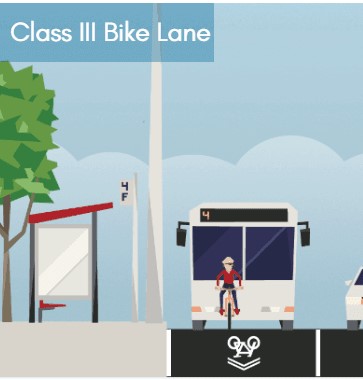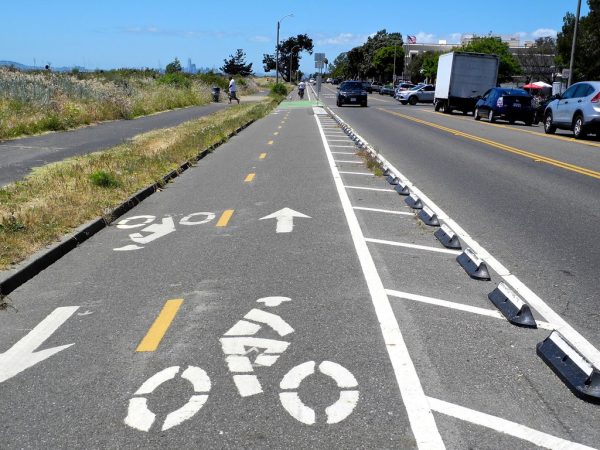CIP Glossary
| TERM | DEFINITION |
| Bicycle Facilities | There are three types of bicycle facilities identified in the California Highway Design Manual. Bike paths (Class I), bike lanes (Class II), bike routes (Class III) and cycle tracks (Class IV). |
Bike paths (Class I) |
Also termed shared-use or multi-use paths, are paved right-of-way for exclusive use by bicyclists, pedestrians and those using non-motorized modes of travel. They are physically separated from vehicular traffic and can be constructed in roadway right-of-way or exclusive right-of-way. Bike paths provide critical connections in the City where roadways are absent or are not conducive to bicycle travel.
Photo Credit: neighborhoods.org, Creative Commons |
Bike lanes (Class II) |
Are defined by pavement striping and signage used to allocate a portion of a roadway for exclusive or preferential bicycle travel. Bike lanes are one-way facilities on either side of a roadway. Whenever possible, bike lanes should be enhanced with treatments that improve safety and connectivity by addressing site-specific issues, such as additional warning or wayfinding signage.
Photo Credit: citymaus, Creative Commons |
Bike routes (Class III) |
Provide shared use with motor vehicle traffic within the same travel lane. Designated by signs, bike routes provide continuity to other bike facilities or designate preferred routes through corridors with high demand. Whenever possible, bike routes should be enhanced with treatments that improve safety and connectivity, such as the use of "Sharrows" or shared lane markings to delineate that the road is a shared-use facility.
Photo Credit: San Joaquin Council of Governments |
| Bulb-Outs | (also called curb extensions) painted markings used to extend the sidewalk into the parking lane at crosswalks. This narrows the roadway, improves visibility between pedestrians and drivers, shortens crossing distances, and slows vehicle turning movements. |
Cycle tracks (Class IV) |
Also referred to as protected bikeways, are exclusive bike facilities that combine the user experience of a separated path with the on-street infrastructure of a conventional bike lane. A cycle track is physically separated from motor traffic and distinct from the sidewalk. The separation maybe in the form of posts, parked cars or a combination of both.
Photo Credit: citymaus, Creative Commons |
| Median Crosswalk Islands | (also called median refuge islands or pedestrian refuge islands) raised areas in the middle of a street that help pedestrians and bicyclists cross safely, creating a “refuge” area in between the two lanes of traffic so that pedestrians can focus on safely crossing one lane/direction of traffic at a time. |
| Speed Reduction Markings | (also known as Optical Speed Bars) painted pavement markings placed with progressively reduced spacing on both edges of a road to create the perception of increased speed. This illusion encourages drivers to slow down as they pass by the markings. |

